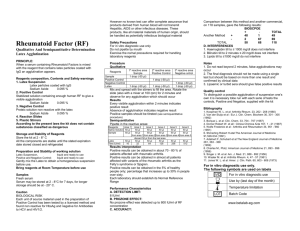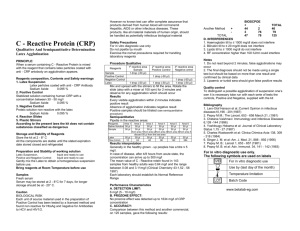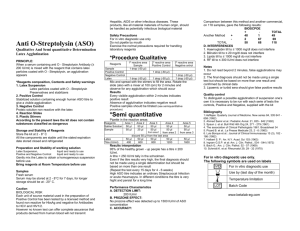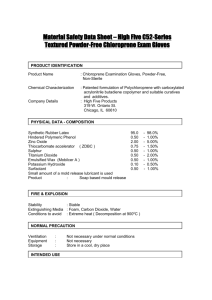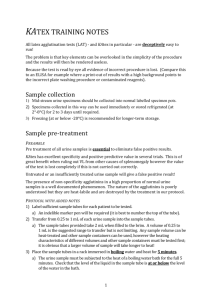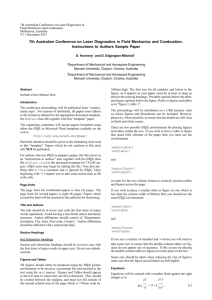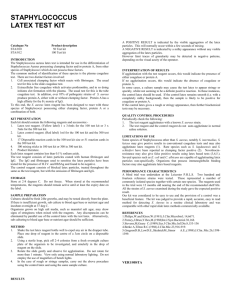Streptococcal grouping latex test kit
advertisement
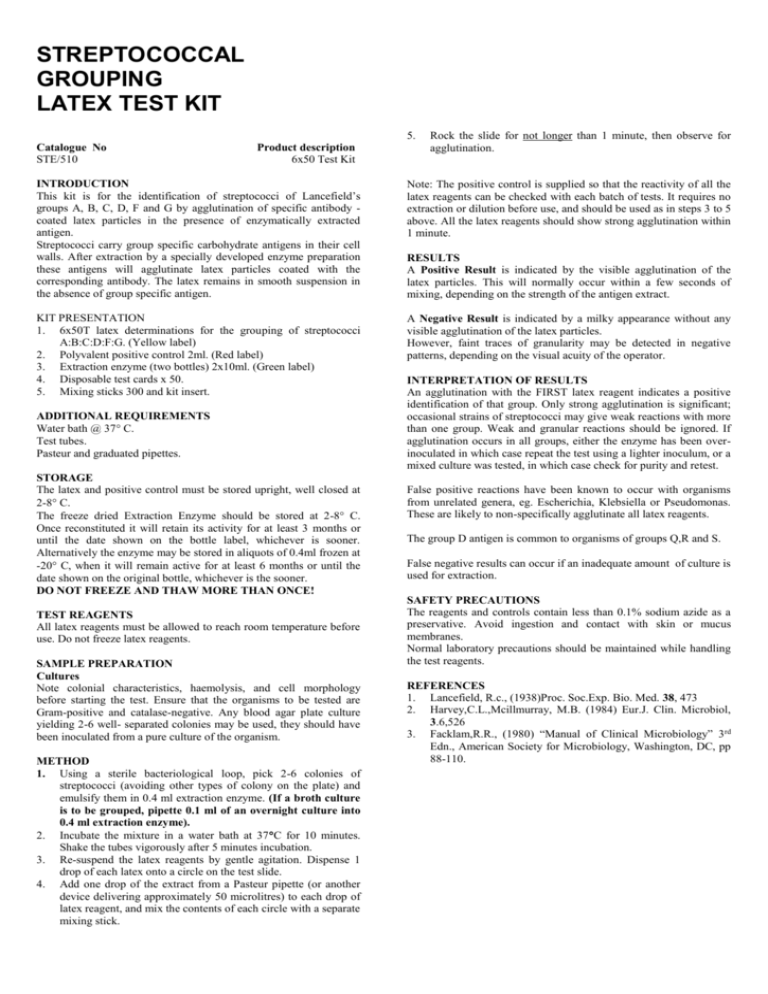
STREPTOCOCCAL GROUPING LATEX TEST KIT 5. Catalogue No STE/510 Product description 6x50 Test Kit Rock the slide for not longer than 1 minute, then observe for agglutination. INTRODUCTION This kit is for the identification of streptococci of Lancefield’s groups A, B, C, D, F and G by agglutination of specific antibody coated latex particles in the presence of enzymatically extracted antigen. Streptococci carry group specific carbohydrate antigens in their cell walls. After extraction by a specially developed enzyme preparation these antigens will agglutinate latex particles coated with the corresponding antibody. The latex remains in smooth suspension in the absence of group specific antigen. Note: The positive control is supplied so that the reactivity of all the latex reagents can be checked with each batch of tests. It requires no extraction or dilution before use, and should be used as in steps 3 to 5 above. All the latex reagents should show strong agglutination within 1 minute. KIT PRESENTATION 1. 6x50T latex determinations for the grouping of streptococci A:B:C:D:F:G. (Yellow label) 2. Polyvalent positive control 2ml. (Red label) 3. Extraction enzyme (two bottles) 2x10ml. (Green label) 4. Disposable test cards x 50. 5. Mixing sticks 300 and kit insert. A Negative Result is indicated by a milky appearance without any visible agglutination of the latex particles. However, faint traces of granularity may be detected in negative patterns, depending on the visual acuity of the operator. ADDITIONAL REQUIREMENTS Water bath @ 37 C. Test tubes. Pasteur and graduated pipettes. STORAGE The latex and positive control must be stored upright, well closed at 2-8 C. The freeze dried Extraction Enzyme should be stored at 2-8 C. Once reconstituted it will retain its activity for at least 3 months or until the date shown on the bottle label, whichever is sooner. Alternatively the enzyme may be stored in aliquots of 0.4ml frozen at -20 C, when it will remain active for at least 6 months or until the date shown on the original bottle, whichever is the sooner. DO NOT FREEZE AND THAW MORE THAN ONCE! TEST REAGENTS All latex reagents must be allowed to reach room temperature before use. Do not freeze latex reagents. SAMPLE PREPARATION Cultures Note colonial characteristics, haemolysis, and cell morphology before starting the test. Ensure that the organisms to be tested are Gram-positive and catalase-negative. Any blood agar plate culture yielding 2-6 well- separated colonies may be used, they should have been inoculated from a pure culture of the organism. METHOD 1. Using a sterile bacteriological loop, pick 2-6 colonies of streptococci (avoiding other types of colony on the plate) and emulsify them in 0.4 ml extraction enzyme. (If a broth culture is to be grouped, pipette 0.1 ml of an overnight culture into 0.4 ml extraction enzyme). 2. Incubate the mixture in a water bath at 37C for 10 minutes. Shake the tubes vigorously after 5 minutes incubation. 3. Re-suspend the latex reagents by gentle agitation. Dispense 1 drop of each latex onto a circle on the test slide. 4. Add one drop of the extract from a Pasteur pipette (or another device delivering approximately 50 microlitres) to each drop of latex reagent, and mix the contents of each circle with a separate mixing stick. RESULTS A Positive Result is indicated by the visible agglutination of the latex particles. This will normally occur within a few seconds of mixing, depending on the strength of the antigen extract. INTERPRETATION OF RESULTS An agglutination with the FIRST latex reagent indicates a positive identification of that group. Only strong agglutination is significant; occasional strains of streptococci may give weak reactions with more than one group. Weak and granular reactions should be ignored. If agglutination occurs in all groups, either the enzyme has been overinoculated in which case repeat the test using a lighter inoculum, or a mixed culture was tested, in which case check for purity and retest. False positive reactions have been known to occur with organisms from unrelated genera, eg. Escherichia, Klebsiella or Pseudomonas. These are likely to non-specifically agglutinate all latex reagents. The group D antigen is common to organisms of groups Q,R and S. False negative results can occur if an inadequate amount of culture is used for extraction. SAFETY PRECAUTIONS The reagents and controls contain less than 0.1% sodium azide as a preservative. Avoid ingestion and contact with skin or mucus membranes. Normal laboratory precautions should be maintained while handling the test reagents. REFERENCES 1. Lancefield, R.c., (1938)Proc. Soc.Exp. Bio. Med. 38, 473 2. Harvey,C.L.,Mcillmurray, M.B. (1984) Eur.J. Clin. Microbiol, 3.6,526 3. Facklam,R.R., (1980) “Manual of Clinical Microbiology” 3rd Edn., American Society for Microbiology, Washington, DC, pp 88-110.
